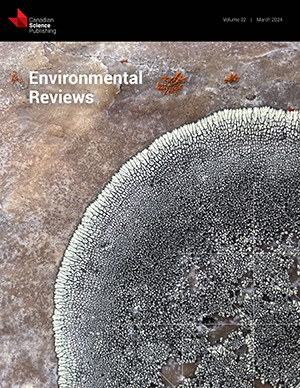审查中小型饮用水系统中水-能源-碳的关系:挑战与机遇
IF 5.7
3区 环境科学与生态学
Q1 Environmental Science
引用次数: 0
摘要
水是人类生活的重要资源,在能源生产中发挥着至关重要的作用。能源对供水同样重要,但根据能源来源的不同,会向大气排放碳。在许多国家,中小型公用事业占供水量的很大一部分,评估水、能源和碳之间的关系对于促进可持续饮用水系统(DWS)至关重要。小型公用事业面临着独特的挑战,如资金不足、基础设施老化和运营成本较高。本文对 100 多项研究进行了审查,以确定并全面了解水源类型和位置、原水水质、用水模式、系统规模、土地利用、人口密度、地形、基础设施使用年限以及系统损耗和维护如何影响中小型供水设施的能耗。审查还从文献中确定了 40 多个与能源和碳有关的指标,提供了该领域的先进信息。研究结果表明,在了解能源和碳指标与公用事业运营绩效的关系方面存在差距。通过分析小型公用事业公司在优化水、能源和碳关系方面面临的挑战和机遇,本文强调了转向清洁能源以减轻环境影响的必要性。本文还强调了采用综合方法的重要性,该方法将技术进步、监管指南和积极的社区参与结合在一起,以实现供水厂的去碳化。本研究旨在向政策制定者、水资源管理专业人员和更广泛的利益相关者介绍可持续发展和具有抗灾能力的中小型污水处理厂的基本要素。本文章由计算机程序翻译,如有差异,请以英文原文为准。
Review of the Water-Energy-Carbon Nexus in Small and Medium Drinking Water Systems: Challenges and Opportunities
Water is a critical resource for human life and plays a vital role in energy production. Energy is equally essential in water supplies but generates carbon emissions to the atmosphere depending on the energy source. Appraising water, energy, and carbon nexus is essential for promoting sustainable drinking water systems (DWSs) in the case of small- and medium-sized utilities, representing a significant portion of the water supply in many countries. Smaller utilities face unique challenges, such as insufficient funding, aging infrastructure, and higher operational costs. This paper examines over 100 studies to identify and comprehensively understand how source type and location, raw water quality, water consumption patterns, system size, land use, population density, topography, infrastructure age, and system losses and maintenance impact energy consumption in small and medium DWSs. The review also identified more than 40 indicators related to energy and carbon from the literature, providing advanced information in this area. Findings suggest a gap in understanding how energy and carbon indicators relate to the utility's operational performance. By analyzing the challenges and opportunities smaller utilities face in optimizing water, energy, and carbon nexus, this paper highlights the necessity of shifting towards cleaner energy sources to mitigate the environmental impacts. It also emphasizes the importance of adopting a holistic approach that integrates technological advancements, regulatory guidelines, and active community engagement to achieve decarbonization in DWSs. The present study aims to inform policymakers, water management professionals, and broader stakeholders about the essential components of sustainable and resilient small and medium DWSs
求助全文
通过发布文献求助,成功后即可免费获取论文全文。
去求助
来源期刊

Environmental Reviews
ENVIRONMENTAL SCIENCES-
CiteScore
9.80
自引率
3.50%
发文量
45
审稿时长
>12 weeks
期刊介绍:
Published since 1993, Environmental Reviews is a quarterly journal that presents authoritative literature reviews on a wide range of environmental science and associated environmental studies topics, with emphasis on the effects on and response of both natural and manmade ecosystems to anthropogenic stress. The authorship and scope are international, with critical literature reviews submitted and invited on such topics as sustainability, water supply management, climate change, harvesting impacts, acid rain, pesticide use, lake acidification, air and marine pollution, oil and gas development, biological control, food chain biomagnification, rehabilitation of polluted aquatic systems, erosion, forestry, bio-indicators of environmental stress, conservation of biodiversity, and many other environmental issues.
 求助内容:
求助内容: 应助结果提醒方式:
应助结果提醒方式:


